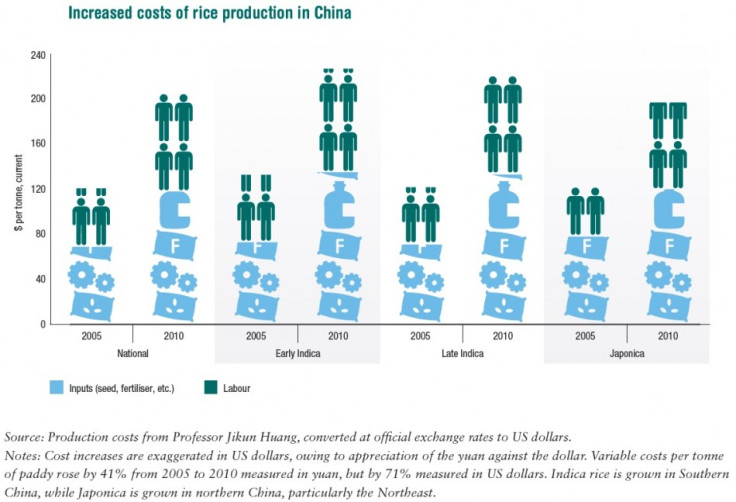Charts in Focus: The End of Cheap Rice
A fascinating report from the Overseas Development Institute points out that we are witnessing the "end of cheap rice", with prices soaring 120% in real terms since 2000.
Why? Mostly the increased costs of production. Take a look at this chart from the report, which compares where those production costs have risen in China from 2005 to 2010:

One of the drivers has been the increasing wages of rural workers. This is great news for those working on the rice farms, who can demand more for their labour as urbanisation and manufacturing lures some of their competitors away from the fields and into the towns and cities.
Here's how the rural wages have changed in India across recent years. Note the sudden uplift from 2007:

While the ODI notes that this is good for those workers benefiting from higher wages, it means those relying on cheap rice as a dietary lifeline will suffer.
The ODI proposes two things. The first is social protection policies as a safety net for the poorest, to shield them from rising food prices and support their low incomes.
Secondly is the mobilisation of African farms, who are yet to fulfil their potential for rice production. Not only could they then serve the local population's needs, where many rely on affordable imported rice, but also export around the world.
Furthermore they can increase their supply of alternatives to rice - such as cassava and yam - so impoverished Africans do not suffer as rice prices soar ever higher.
© Copyright IBTimes 2025. All rights reserved.






















